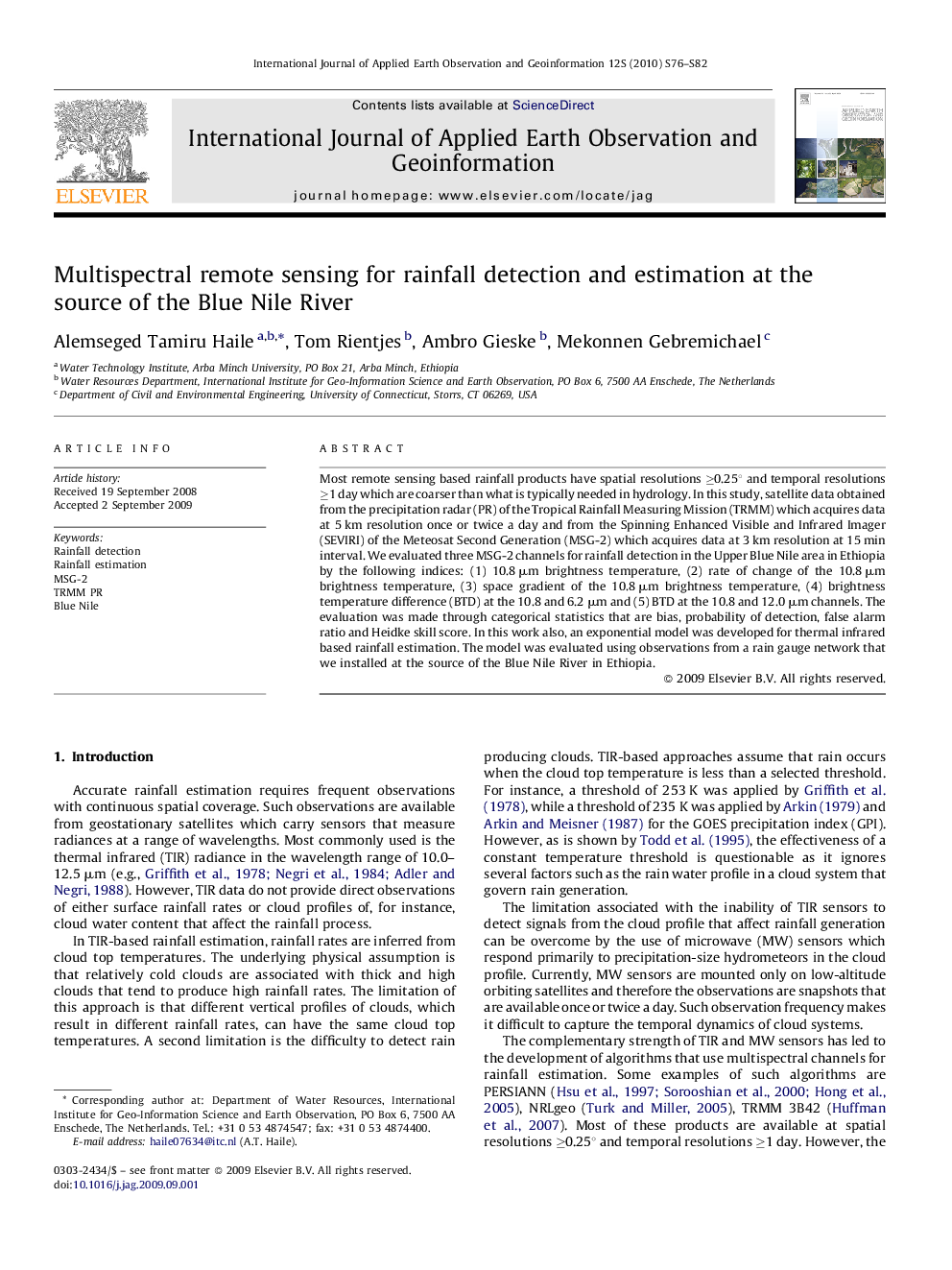| Article ID | Journal | Published Year | Pages | File Type |
|---|---|---|---|---|
| 4465344 | International Journal of Applied Earth Observation and Geoinformation | 2010 | 7 Pages |
Most remote sensing based rainfall products have spatial resolutions ≥0.25° and temporal resolutions ≥1 day which are coarser than what is typically needed in hydrology. In this study, satellite data obtained from the precipitation radar (PR) of the Tropical Rainfall Measuring Mission (TRMM) which acquires data at 5 km resolution once or twice a day and from the Spinning Enhanced Visible and Infrared Imager (SEVIRI) of the Meteosat Second Generation (MSG-2) which acquires data at 3 km resolution at 15 min interval. We evaluated three MSG-2 channels for rainfall detection in the Upper Blue Nile area in Ethiopia by the following indices: (1) 10.8 μm brightness temperature, (2) rate of change of the 10.8 μm brightness temperature, (3) space gradient of the 10.8 μm brightness temperature, (4) brightness temperature difference (BTD) at the 10.8 and 6.2 μm and (5) BTD at the 10.8 and 12.0 μm channels. The evaluation was made through categorical statistics that are bias, probability of detection, false alarm ratio and Heidke skill score. In this work also, an exponential model was developed for thermal infrared based rainfall estimation. The model was evaluated using observations from a rain gauge network that we installed at the source of the Blue Nile River in Ethiopia.
